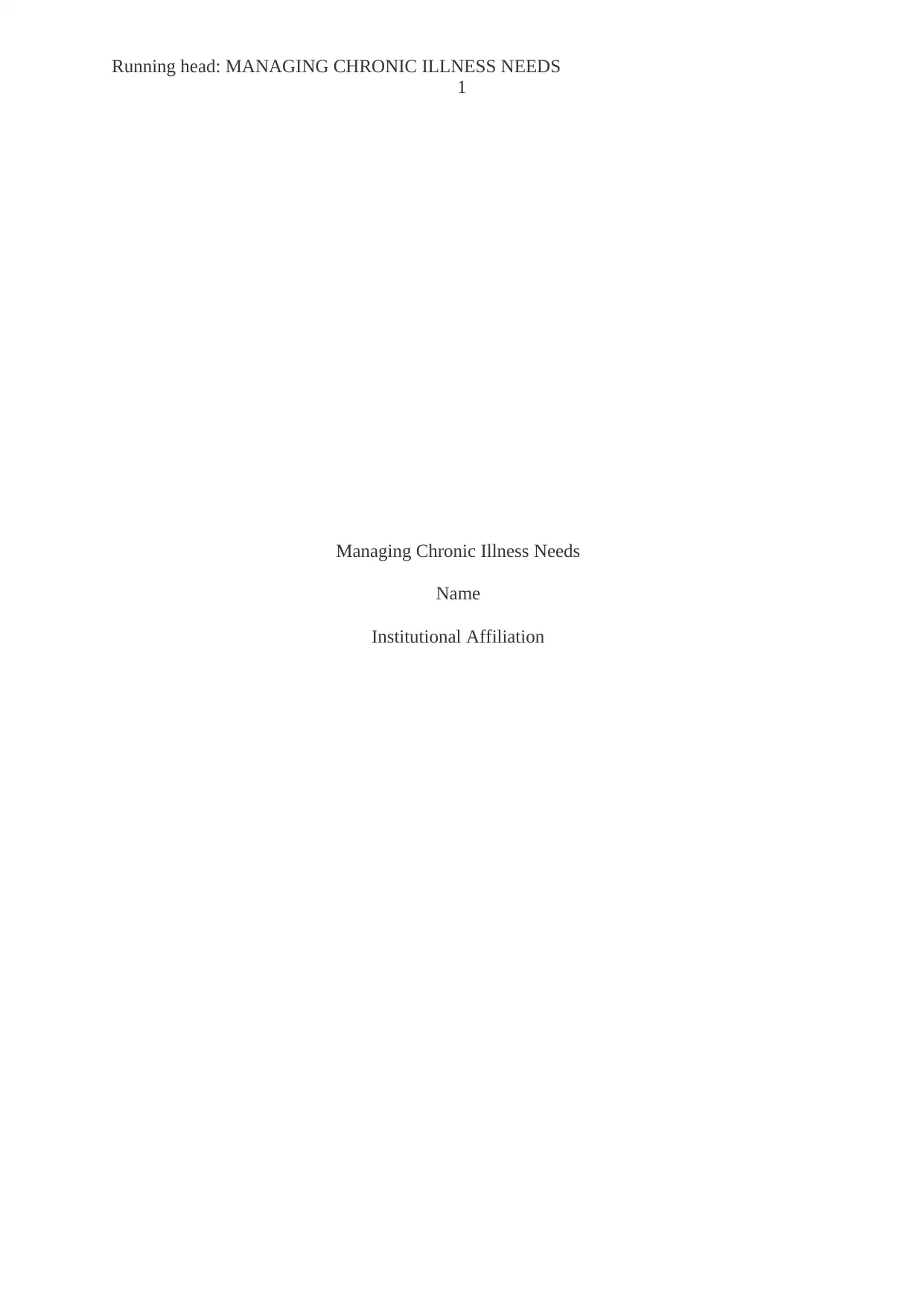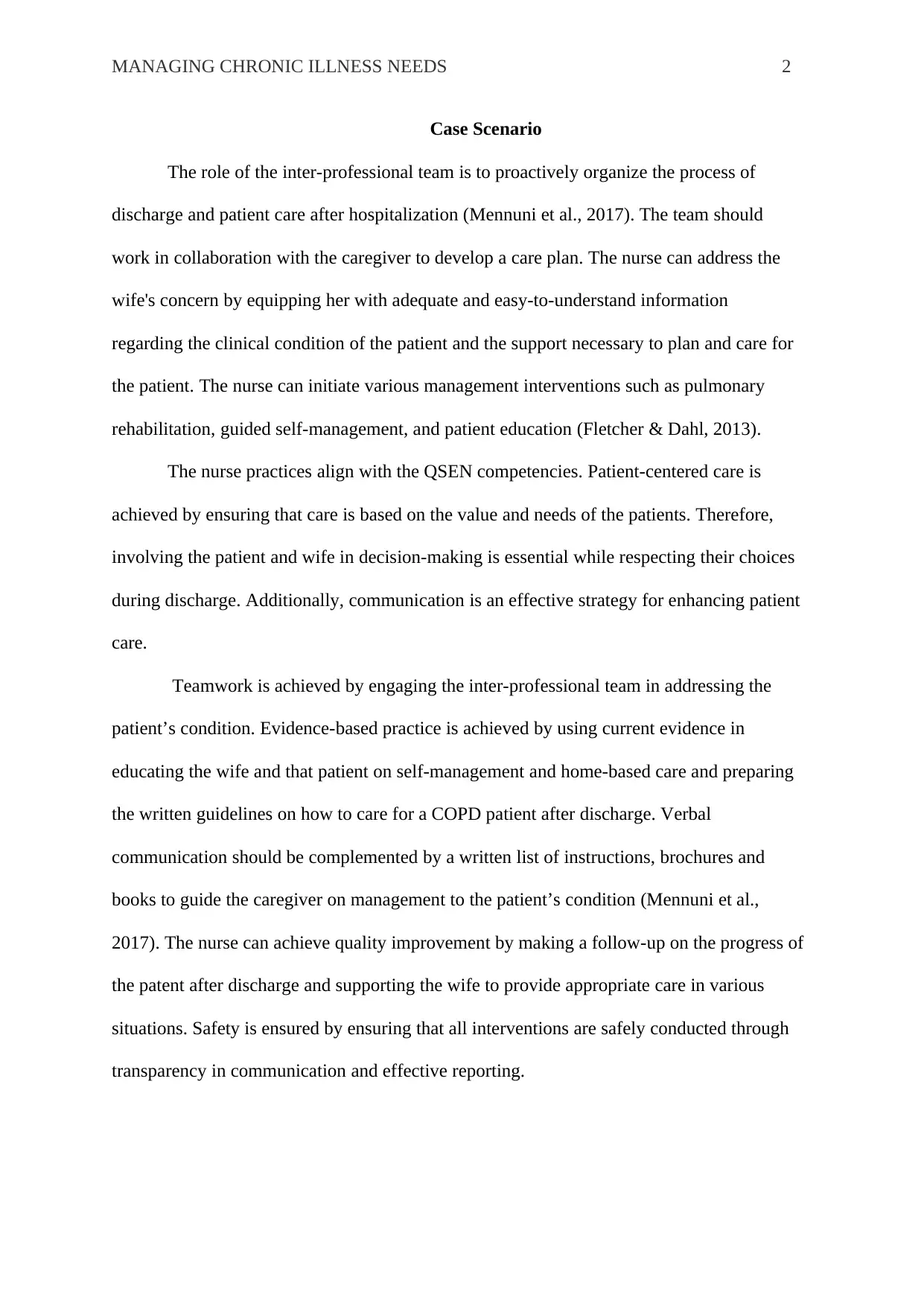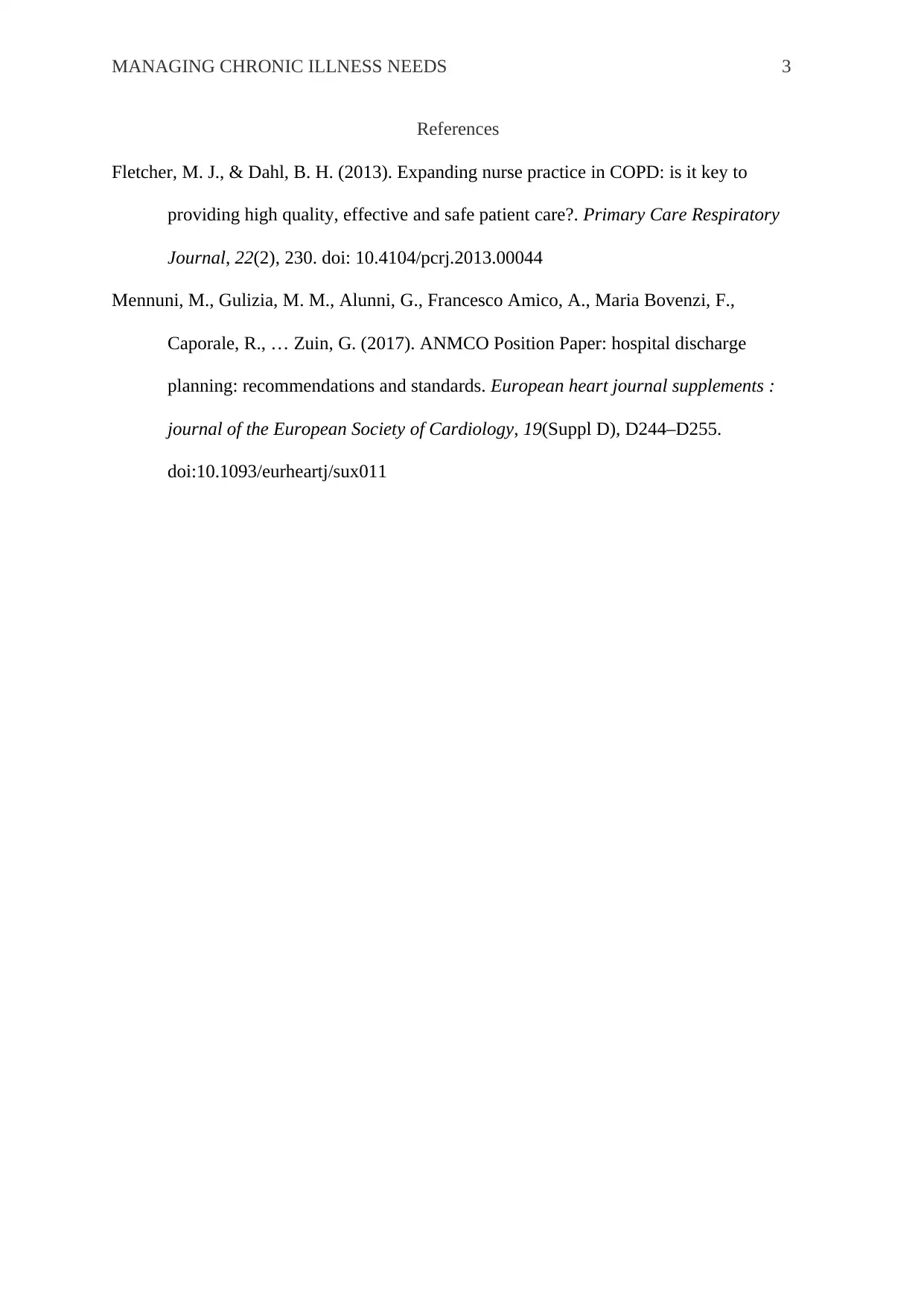Case Study: Managing Chronic Illness and Patient Care
VerifiedAdded on 2022/10/01
|3
|438
|27
Report
AI Summary
This report presents a case study on managing chronic illness, focusing on a patient with COPD and the role of the inter-professional team in patient care and discharge planning. The report emphasizes the importance of a collaborative approach, including the nurse, patient, and caregiver. The nurse's responsibilities include providing patient education, implementing interventions like pulmonary rehabilitation and guided self-management, and ensuring patient-centered care aligned with QSEN competencies. The report also highlights the use of evidence-based practices, such as providing written instructions and follow-up care. The goal is to improve patient outcomes and support the caregiver in providing effective home-based care. The report references relevant literature to support its findings, and is written from the perspective of a student on Desklib.
1 out of 3








![[object Object]](/_next/static/media/star-bottom.7253800d.svg)